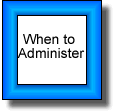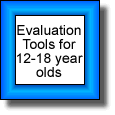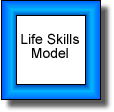 |
|||||||||
 |
|||||||||
 |
|||||||||
 |
|||||||||
 |
|||||||||
Critical Thinking: Research Abstract
Fisher, Robert (1990). Teaching Children to Think. Hemel Hempstead, Herts: Simon and Schuster Education.
Teaching Children to Think discusses the nature of thinking and thinking skills. It reviews the main concepts, methods and research findings in the teaching of thinking skills which have been developed in recent years, and presents a survey of current approaches and ways of teaching children to think for themselves both at home and at school. The book presents definitions and characteristics of the various components of thinking (creative thinking, critical thinking, problem solving) and offers ways to evaluate children's thinking skills as well as strategies to encourage skill development.
Fitzgerald, Mary Ann (2000). Critical Thinking 101:The Basics of Evaluating Information. Knowledge Quest, 29:13-20.
The purpose of this article is to present strategies and recommend ways to infuse evaluative skills--some of the most key aspects of the critical thinking process--into the curriculum. Students may know how to access and locate, interpret, and apply information. However, if they do not invest any time in evaluating the information they use, their efforts often result in a low-quality product. Worse, failure to evaluate may result in unfavorable outcomes due to bad decision making based on flawed information. Unfortunately, evaluating information is not a simple task, and experience with children and adolescents should convince any educator that simply directing a fifth-grader to evaluate a newspaper article is not an effective teaching strategy. Most young students are unable to verbalize what evaluation means or describe how it should be carried out. They know few concrete strategies with which they can start evaluating information. The article recommends that students be involved in information inquiry projects from an early age as often as possible. Topics for information projects should come from across the curriculum, with some kind of relationship to the interest and curiosity of the individual student. Students should understand that evaluation is difficult and that it is often not possible to be certain of the correctness of a judgment. While this perpetual uncertainty may feel uncomfortable to young students, it is a necessary part of intellectual development. Checklists that outline the evaluation process can be useful in teaching children this important skill.
Halpern, Diane F. (1998). Teaching Critical Thinking for transfer Across Domains: Dispositions, Skills, Structure Training, and Metacognitive Monitoring. American Psychologist, 53:449-455.
Numerous studies have recently shown that many people in our society consistently engage in flawed thinking. However, studies also show that critical thinking, which this article defines as the deliberate use of skills and strategies that increase the probability of a desirable outcome, can be learned. Moreover, critical thinking can be taught in such a way that the learner will be able to transfer the acquired knowledge to new and different contexts. The article presents a model to guide teaching and learning for critical thinking: a. a dispositional component to prepare learners for effortful cognitive work, b. instruction in the skills of critical thinking, c. training in the structural aspects of problems and arguments to promote transfer of critical thinking skills, and d. a metacognitave component that includes checking for accuracty and monitoring progress toward the goal.
Lrynock, Karoline and Robb, Louise (1999). Problem solved: How to Coach Cognition. Educational Leadership, 57:29-32.
This article describes the concept of problem-based learning, in which students are given problems about the real world and asked to work together to find solutions. It offers examples of the types of projects students can be given, and tips on how to foster the thinking process students go through in problem-based learning. From constructing cars to designing ecosystems, problem-based activities teach thinking skills as well as content. Students also gain skill in gathering information from a wide variety of media forms and resources. When faced with real problems about the world, students come up with accurate, logical and creative solutions using skills that connect to different subject areas. By choosing problems that match the intellectual abilities and interests of their students, teachers who use problem-based learning generate enthusiasm and enjoyment in the classroom.
Menssen, Sandra (1993). Critical Thinking and Construction of Knowledge. American Behavioral Scientist, 37:85-93.
This article examines the question of what characterizes the ideal critical thinker, suggesting that a critical thinker is a "constructivist knower," meaning that he or she integrates objective and critical ways of knowing with subjective and creative ways of knowing. The article also suggests that thinkers identified as model constructivist knowers display critical and creative thinking in a way that underscores the existence of common standards of judgement and rationality.
Paul, Richard, Binker, A.J.A, Martin, Douglas, Vetrano, Chris, and Kreklau, Heidi (1989). Critical Thinking Handbook: 6th-9th Grades. Rohnert Park, CA: Center for Critical Thinking and Moral Critique.
The Critical Thinking Handbook offers a definition of critical thinking and the principles that underlie it, defining critical thinking as thinking which evaluates reasons and brings thought and actions in line with evaluations. The ideal of the critical thinker, the book suggests, can be roughly expressed in the phrase "reasonable person," meaning a person who evaluates reasons and evidence, can distinguish poor from strong reasoning, make assumptions and evaluate them, reject unwarranted inferences, and distinguish what is known from what is merely suspected. The book is also designed to help teachers learn to teach critical thinking. It presents general strategies which can be used to foster critical thinking and also demonstrates how lesson plans can be remodeled to bring critical thinking into everyday classroom activities.
Sears, A., and Parsons, J. (1991). Toward Critical Thinking as an Ethic. Theory and Research in Social Education, 19:45-68.
Tsui, Lisa (2000). Effects of Campus Culture on Students' Critical Thinking. Review of Higher Education, 23:421-441.
This study examines how campus culture is related to the development of students' abilities to think critically. Such skills as making correct inferences, evaluating evidence, recognizing relationships, identifying assumptions, and independent thinking were elements of critical thinking examined. Data was gathered from students at four institutions. The qualitative data included interviews with students about their perceptions of the campus culture and their own critical thinking skills since entering college. The study found that three elements are influential in promoting a campus culture conducive to critical thinking: the nature of an institution's epistemological orientation; its ability to instill responsibility and self-reflection in students; and fostering social and political awareness in them.
Weinstein, Mark (2000). A Frame for Critical Thinking. High School Magazine, 7:40-44.
Critical thinking is most expediently introduced when it is embedded in school subjects already taught. Whatever the dispositions, skills, and strategies used, they need to be identified, contextualised, and exercised within the regular curriculum if critical thinking is to take a secure place in teaching and learning in the schools. This article offers a framework for teaching critical thinking as an integrated part of the school curriculum. The framework is based on 6 elements of critical thinking that can be promoted in the classroom and school community. First, critical thinking is skillful, relying on proven methods of inquiry and reasoning. Second, critical thinking is responsible, meaning that The critical thinker sees an obligation to present reasons in light of acceptable standards or to challenge such standards by relevant and persuasive argument. Third, critical thinkers exhibit judgement skills, meaning the skills to weigh and assess alternatives, assess priorities, and determine truth and relevance. Fourth, critical thinkers can apply known criteria to make a judgement or decision. Fifth, critical thinking is self correcting, and sixth, critical thinking is sensitive to context.
Wilks, Susan (1995). Critical and Creative Thinking: Strategies for Classroom Inquiry. Portsmouth, NH: Heinemann
Critical and Creative thinking provides teachers with strategies for encouraging both critical and creative thought in their classrooms. The author suggests that an environment which fosters independent thinking is best created through better questioning, greater participation, and more open discussion, and provides methods for teachers to use in fostering an atmosphere of philosophical enquiry. It defines the components of critical thinking as: identifying assumptions, prioritizing, seeking alternatives, speculating, drawing inferences, and identifying faulty logic, and also offers a range of classroom activities designed to develop these thinking skills. In addition, guidelines are provided which show how the techniques can be fitted to a range of ages and abilities.
